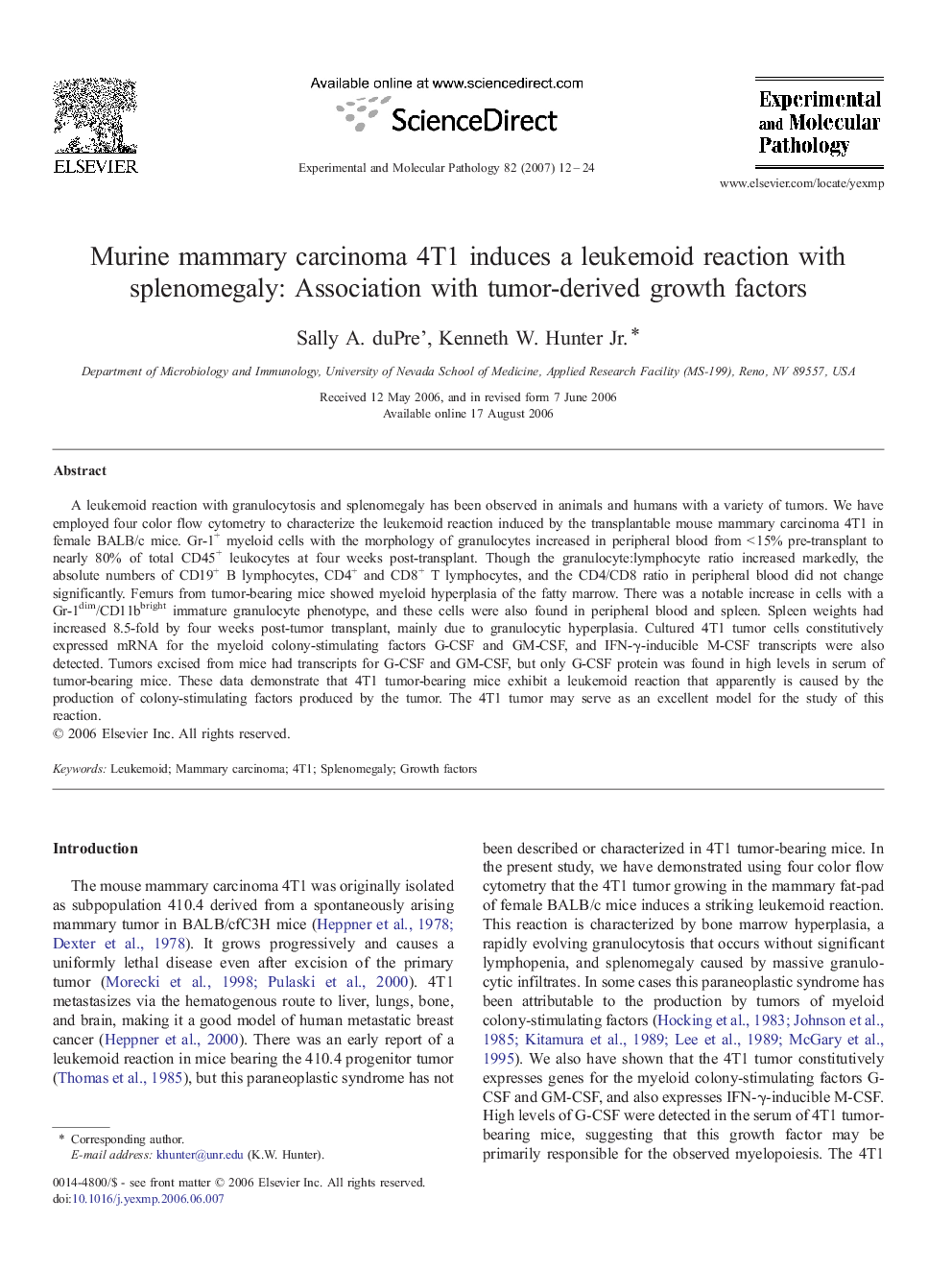| Article ID | Journal | Published Year | Pages | File Type |
|---|---|---|---|---|
| 2776012 | Experimental and Molecular Pathology | 2007 | 13 Pages |
A leukemoid reaction with granulocytosis and splenomegaly has been observed in animals and humans with a variety of tumors. We have employed four color flow cytometry to characterize the leukemoid reaction induced by the transplantable mouse mammary carcinoma 4T1 in female BALB/c mice. Gr-1+ myeloid cells with the morphology of granulocytes increased in peripheral blood from < 15% pre-transplant to nearly 80% of total CD45+ leukocytes at four weeks post-transplant. Though the granulocyte:lymphocyte ratio increased markedly, the absolute numbers of CD19+ B lymphocytes, CD4+ and CD8+ T lymphocytes, and the CD4/CD8 ratio in peripheral blood did not change significantly. Femurs from tumor-bearing mice showed myeloid hyperplasia of the fatty marrow. There was a notable increase in cells with a Gr-1dim/CD11bbright immature granulocyte phenotype, and these cells were also found in peripheral blood and spleen. Spleen weights had increased 8.5-fold by four weeks post-tumor transplant, mainly due to granulocytic hyperplasia. Cultured 4T1 tumor cells constitutively expressed mRNA for the myeloid colony-stimulating factors G-CSF and GM-CSF, and IFN-γ-inducible M-CSF transcripts were also detected. Tumors excised from mice had transcripts for G-CSF and GM-CSF, but only G-CSF protein was found in high levels in serum of tumor-bearing mice. These data demonstrate that 4T1 tumor-bearing mice exhibit a leukemoid reaction that apparently is caused by the production of colony-stimulating factors produced by the tumor. The 4T1 tumor may serve as an excellent model for the study of this reaction.
